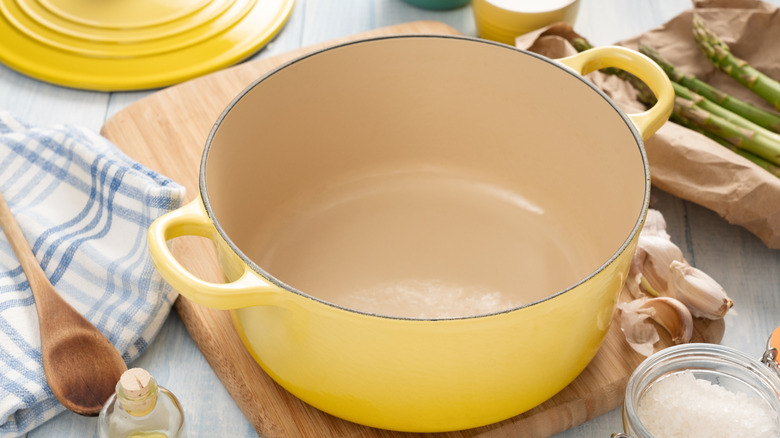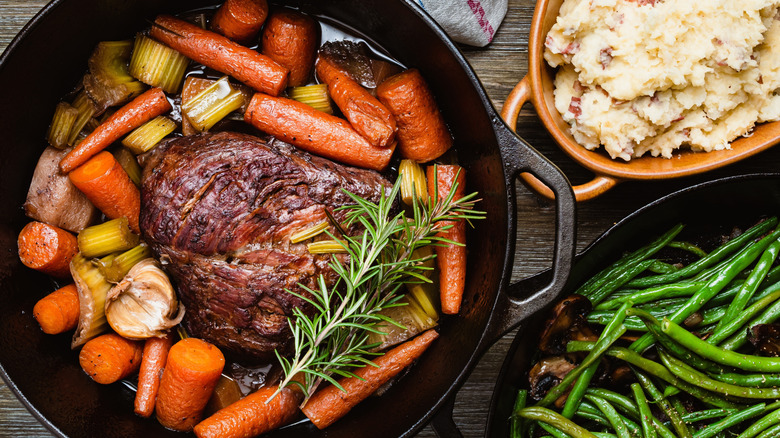Why Is It Called A Dutch Oven, Anyway?
A good Dutch oven is a staple in any kitchen, whether that's a home cook's or a professional's. The heavy duty, durable cookware is practically indestructible and also a superior conductor for evenly distributed heat, making it useful for several types of cooking. There are dozens of cookware brands that make Dutch ovens, and they come from places like France (Le Creuset, Staub), the United States (Lodge, Made In), and Italy (Ballarini). So then, why are the pots all branded as "Dutch?"
During the Renaissance era, it wasn't only art and architecture that were evolving, it was cookware, too. Copper and brass pots and pans were big in Europe, but they were also expensive. By the 1600s, England's Abraham Darby went to Holland where he heard the Dutch were excelling at metal work. Experiencing their superior technique first-hand, Darby returned to England with new tricks up his sleeve, so to speak, and created a new type of iron pot in England, which he dubbed the "Dutch oven," paying homage to the Dutch methods he learned which involved using sand molds.
Amazingly, these Dutch methods still frame the way many Dutch ovens are made today, with sand molds playing a key part in their creation. Using sand as a mold helps to create smooth, even surfaces that cooks rely on to get picture-perfect results when they cook in these vessels.
The most versatile tool in your kitchen
When you look at a Dutch oven, you might automatically think of recipes like stews, soups, and chilis because, well, they look like nice, big, deep soup pots. But these just scratch the surface of what you can create in a Dutch oven. Because they conduct heat so well, they are perfect for searing, browning, and braising. In fact, you can go from braising to stewing in this cookware with a recipe like braised lamb shank stew. You can easily roast whole chickens, ducks, small turkeys, not to mention vegetables in Dutch ovens. You can even sear your ingredients first on the stovetop because these vessels transition from the stove to the oven seamlessly.
Use your Dutch oven to fry chicken, make french fries and churros, bake pizza, and make gratins — you can even make dessert in Dutch ovens. They're great for things like peach cobblers (in which you can absolutely use canned peaches). When it comes to making homemade bread (which is good for you in more ways than one), a Dutch oven is perfect in creating gorgeous, round loaves. In addition, this type of cookware isn't just for indoor use; you can put it in a smoker, on a grill top, or over an open fire, making it popular for outdoor enthusiasts and casual campers. A Dutch oven from a reputable company (one that's preferably using Dutch manufacturing techniques) can definitely last a lifetime and (considering its versatility) is a worthwhile investment for anyone who likes to cook.

